This is no ordinary terrestrial globe. And you’ll find it in a museum that is anything but ordinary.
When we move in closer, we find that it is labelled in Braille.
 And the map shown below is not your average stuff-it-in-the-bag tourist map of Paris. But, for the blind, it gave a good introduction to the layout of Paris. Take a good look. I am sure you can locate the Seine and the Ile de la Cité. It was designed to be read by the blind who read by touch.
And the map shown below is not your average stuff-it-in-the-bag tourist map of Paris. But, for the blind, it gave a good introduction to the layout of Paris. Take a good look. I am sure you can locate the Seine and the Ile de la Cité. It was designed to be read by the blind who read by touch.
Welcome to the Museum Valentin Haüy (his unusual last name is pronounced Ah-oo-ee), which honours the founder of Europe’s first school for the blind. More than that, it is an excellent guide to how life has changed for the blind.
Before the 18th century, the traditional lot of the blind included poverty, ridicule, little or no formal training or education, and life at the margins of society. At a street fair for Saint Ovide in 1771, a café owner put together an “orchestra” composed of people from a nearby residence for the blind. The crowd was there to laugh at the blind:
Tricked out in long red robes, and wearing pointed dunce caps and opaque glasses, the ensemble played horribly discordant “music.” Seated on a peacock throne, the “conductor,” wearing wooden clogs and a hat with ass’s ears, tried unsuccessfully to keep time. The crowd laughed uproariously at this bizarre performance, which was a great money maker for the owner of the café where it was staged.*
Not everyone was amused. The 26-year old Valentin Haüy, a well-educated interpreter, was so moved by the humiliation suffered by the blind that he dedicated his life to making life better for them. He decided to start with one of their strengths, namely their ability to distinguish shapes through touch. Through that they could learn to read. His belief that the blind were competent and capable was unheard of in his day.
Valentin was not rich, but he was committed to his cause, persuasive, and somewhat well-connected. He tried to make the writing system used by sighted people visible to the blind by creating raised, embossed letters that the blind could read by touch.
 (For more examples of embossed type, see this online exhibit from Birkbeck University.)
(For more examples of embossed type, see this online exhibit from Birkbeck University.)
Haüy had to make a living, but he found time and money to support a young blind beggar whom he taught to read his system. Then in 1786, Haüy rented space at 18 rue Notre-Dame-des-Victoires for l’Institution des Enfants Aveugles (Institution for Blind Children), the first educational institution of its kind in Europe.
The school did not have it easy; there was always the need for money despite the efforts of a Philanthropic Society. When Haüy’s students impressed Louis XVI, the word Royal was added to the school name, which became the Institution Royale des Jeunes Aveugles (Royal Institution for Blind Youth), but the new name brought no extra funding and later Louis XVI and his wife Marie Antoinette were executed during the Revolution.
The school was nationalized by the revolutionaries in 1791. In the end neither they nor their successors proved any more supportive and understanding. Eventually Haüy was forced to retire in February 1807. His pension was less than half his former salary. Nonetheless, Haüy had shown that the blind could be taught to read by touch. Others built on this breakthrough.
One such pioneer was a retired French military officer, Nicholas Charles Barbier de la Serre (1767-1841). At a time when teaching the blind to read and write was based on imitating the standard forms of letters, he had a different approach.
Contrary to popular myth, Barbier did not develop his ideas on the suggestion of Napoleon, who wanted a way for soldiers to communicate messages in the dark. I confess to making this error in an earlier blog.
After his military career was over, Barbier dedicated his life to languages and communications. He wanted to create a written language that would be easy to learn. He felt that people had been “déshérités de l’instruction” (disinherited from, or robbed of, instruction) by the difficulties of writing.
His new system was phonetic, and did not require its users to know how to spell. All they had to do was to record the sounds of words. The French language consists of 36 distinct sounds. The 36 sounds can be listed in a table of six columns, each of six lines. In Barbier’s system, each sound was represented according to its coordinates on the table: one number for the column and one for the line. These coordinates were recorded by a system of raised or embossed dots.
One must credit Barbier with freeing the blind from the need to decipher stylized versions of the written alphabet, which were confusing (how to distinguish a cursive a from an o from a c?). And he was the first to propose that blind people use a stylus to make the indentations on the paper that, when turned over, became raised points the blind could read.
Unfortunately, the system was still too complicated, with 2 columns of 6 dots.
 When the ten-year-old Louis Braille arrived at the school for the blind in February 1819, he was taught the method introduced by Haüy. Two years later, Barbier introduced his system to the students at the school. Braille realized that if Barbier’s system could be simplified, it would be even better. He modified the system to a total of 6 dots in 2 parallel columns of 3. Moreover, because there were so many ways to pronounce words (depending on regional accents), he returned to representing letters instead of phonetic sounds.
When the ten-year-old Louis Braille arrived at the school for the blind in February 1819, he was taught the method introduced by Haüy. Two years later, Barbier introduced his system to the students at the school. Braille realized that if Barbier’s system could be simplified, it would be even better. He modified the system to a total of 6 dots in 2 parallel columns of 3. Moreover, because there were so many ways to pronounce words (depending on regional accents), he returned to representing letters instead of phonetic sounds.
His fellow blind students recognized the brilliance of Braille’s system far faster than their sighted educators and administrators. Alas, educational systems seem to be inherently conservative. It took a very long time for the Braille system to be accepted.
The standard Braille system of raised dots allowed the blind to write for the blind. But what about writing for the sighted who did not know Braille? Louis thought of that too. He realized that the roman alphabet could also be reduced to a system of points which he called decapoint. Here is a sample from the Louis Braille Museum in Coupvray.
It was, as one might imagine, very laborious to write such a letter. So Braille worked with another blind man, Pierre Foucault, to produce a mechanical system to write decapoint.
One simply pressed the appropriate plunger depending on which of ten possible positions one wanted.
A considerable number of the blind were also deaf, or deaf and mute. The museum also shows equipment developed to meet their needs. In the image below we have a device to communicate with someone both blind and deaf. The sender pressed the keys and the receiver could feel the appropriate pins rising and falling, spelling words in Braille.
And for a two-way conversation one could use this device.
The stories of devices, systems, ingenuity and perseverance that the Valentin Haüy Museum tells are astounding. We first visited the museum at the suggestion of a friend in Paris, Farouk, who shares my interest in the history of typewriters (the museum has an excellent collection of typewriters for the blind).
Since visiting the museum, where curator Madame Noëlle Roy graciously welcomed us and patiently answered our questions, I have changed my research interests. There is so much to learn about devices for the blind that I will leave the research on devices for the sighted to others.
The Valentin Haüy Museum is a unique resource filled with extraordinary objects. I can hardly wait to get back. I want to spend more time looking at this machine to write both Braille and inked writing at the same time on two separate sheets of paper.
And as a Canadian I would like to know the story behind this item. Does anyone have any suggestions?
 Text by Norman Ball, photographs by Philippa Campsie. Thanks to Farouk Derdour, Madame Noëlle Roy, and Stéphane Mary for their kind assistance.
Text by Norman Ball, photographs by Philippa Campsie. Thanks to Farouk Derdour, Madame Noëlle Roy, and Stéphane Mary for their kind assistance.
* C. Michael Mellor, Louis Braille: A Touch of Genius (Boston: National Braille Press, 2006), p. 30.



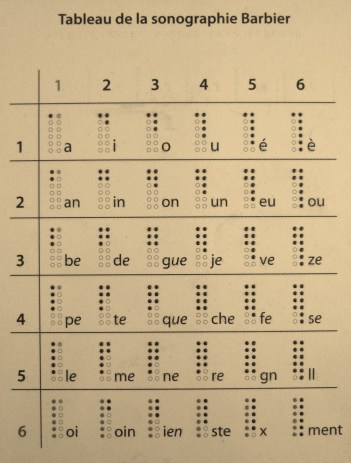





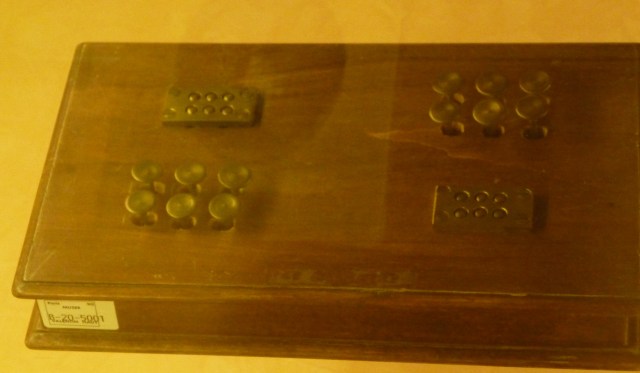


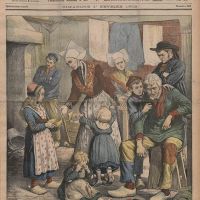

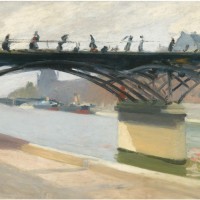


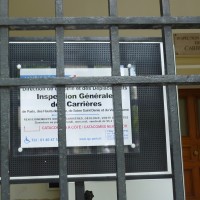


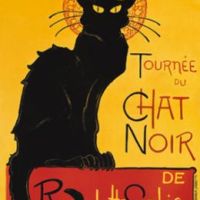










I love your blog. You write about so many interesting things and places in Paris. Makes me want to see them all. Please keep it up!
Reblogged this on MaxiAids.
Very cool post!
Pingback: The once and future Paris transport museum | Parisian Fields
Pingback: Get thee to a library | Parisian Fields
Pingback: A web of friends and a ceremony in a former corset factory | Parisian Fields
This is fascinating! You’ve answered so many questions I didn’t even know I needed to ask … thank you for this wonderful post.
What a wonderful thing to say. It makes any writer happy to help others see answers to questions they did not know they needed to ask. I think that is one of the things that keeps us going.